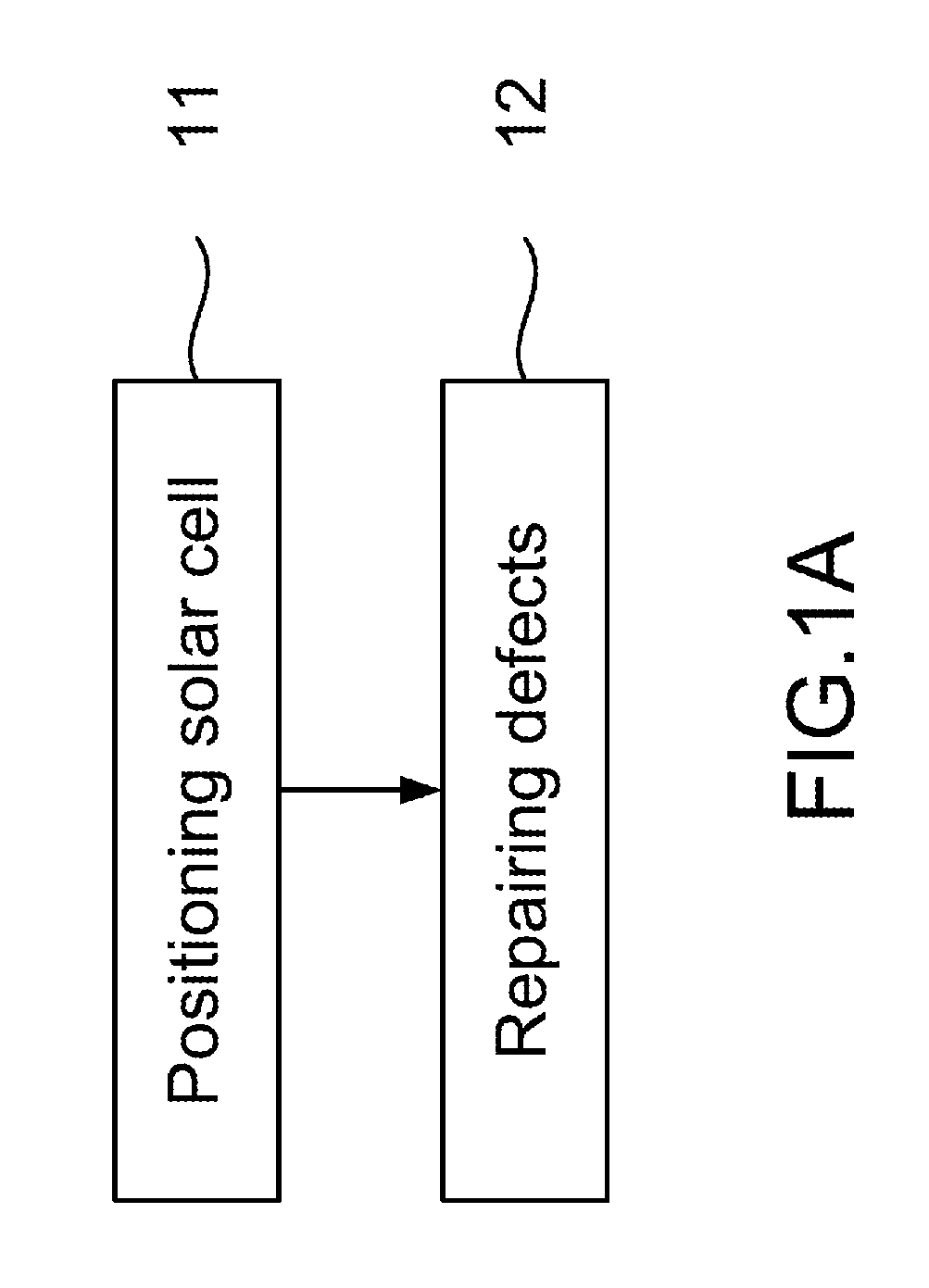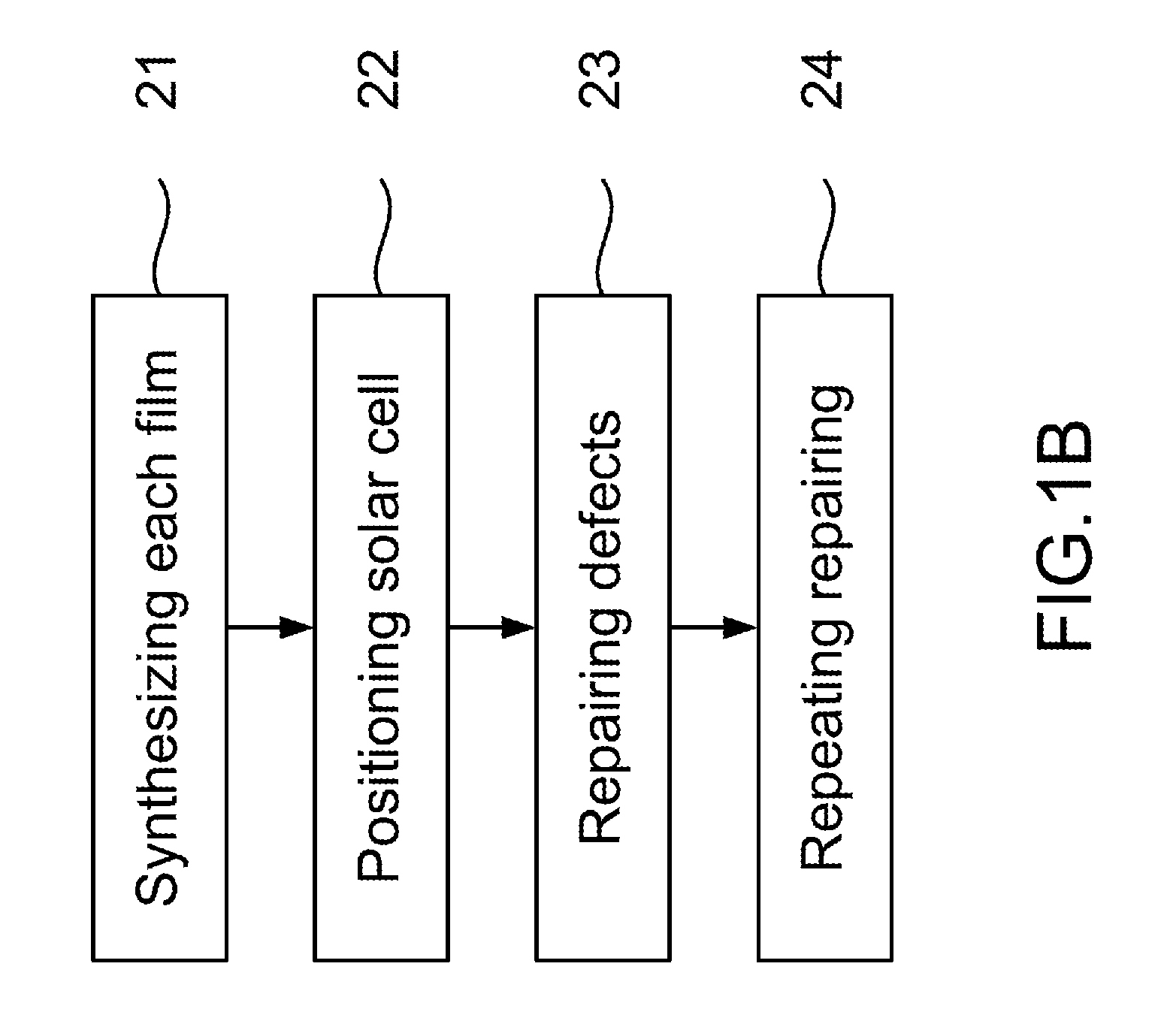Solar Cell Defect Passivation Method
a solar cell and defect technology, applied in the field of solar cell defect passivation, can solve the problems of less improvement of crystalline silicon solar cell and a-si solar cell with single junction due to process stress, and may be found in the final product manufacturing, basic electric elements, climate sustainability, etc., to achieve the effect of improving photovoltaic conversion efficiency
- Summary
- Abstract
- Description
- Claims
- Application Information
AI Technical Summary
Benefits of technology
Problems solved by technology
Method used
Image
Examples
Embodiment Construction
[0022]The following descriptions of the preferred embodiments are provided to understand the features and the structures of the present disclosure.
[0023]Please refer to FIG. 1A and FIG. 1B, which are flow views showing a first preferred embodiment and a second preferred embodiment according to the present disclosure. As shown in the figures, the present disclosure is a solar cell defect passivation method, where plasma immersion ion implantation (PIII) is used to repair defects of a solar optoelectronic device. In a first preferred embodiment, a passivation process for repairing defects of a wafer solar cell through ion implantation comprises the following steps:
[0024](a1) Positioning solar cell 11: A solar optoelectronic device is put into a PIII device, where the solar optoelectronic device is a wafer solar cell made of crystalline silicon or polycrystalline silicon.
[0025](b1) Repairing defects 12: A plasma of an ion is selected to three-dimensionally repair defects of the solar o...
PUM
 Login to View More
Login to View More Abstract
Description
Claims
Application Information
 Login to View More
Login to View More - R&D
- Intellectual Property
- Life Sciences
- Materials
- Tech Scout
- Unparalleled Data Quality
- Higher Quality Content
- 60% Fewer Hallucinations
Browse by: Latest US Patents, China's latest patents, Technical Efficacy Thesaurus, Application Domain, Technology Topic, Popular Technical Reports.
© 2025 PatSnap. All rights reserved.Legal|Privacy policy|Modern Slavery Act Transparency Statement|Sitemap|About US| Contact US: help@patsnap.com



